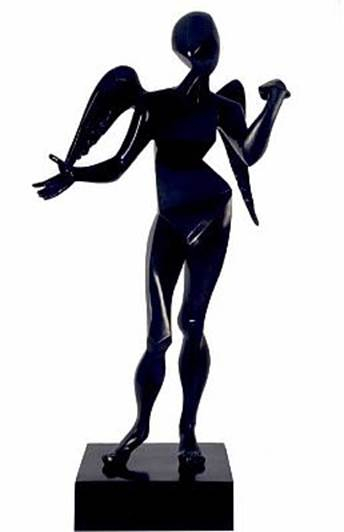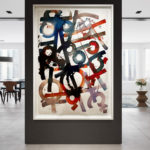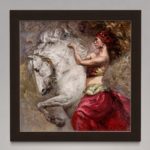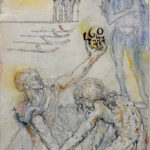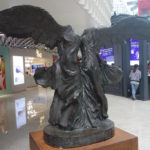Salvador Dali (Spanish, 1904-1989)
“Cubist Angel” (1983)
Edition of 450 in bronze.
73cm (including base).
Literature: Catalogue Raisonne “Le Dur et le Mou” by Robert & Nicolas Descharnes, pg. 148-149, Ref #385.
Certification: Gala Dali Foundation, Figuras, Spain and Robert Descharnes.
Angels are an important theme throughout Dali’s work. We find a great many references to them in his writings. In an entry dated May 1953 in his Diary of a Genius, Dali wrote, “I have drawn from sunrise until the evening six faces of mathematical angels, explosive, and of such great beauty that I remained exhausted and stiff.” And on Auguste 1953, “Everything is on the ‘outside’ with angels, it is impossible to picture them anymore without this ‘outside’.- Robert & Nicolas Descharnes, Catalogue Raisonne, “Le Dur et le Mou”, 2004
The Surrealist and Cubist Angels are two of the most powerful statements in Dali’s sculptural oeuvre. These fraternal twin figures, with their jet-black patinas and smooth androgynous bodies evoke his theories on mathematical symmetry and the asexuality of man versus angel. Dalis use of a variation on the base of the 3rd century Greek Icon “Winged Victory/Nike of Samothrace” (Musée du Louvre) on “Surrealist Angel” provides a glimpse into what he felt his own “Nike” was meant to symbolize, the sounding of the trumpets of Victory.
DALI- CubistAngelPREST
January 21, 2014/
